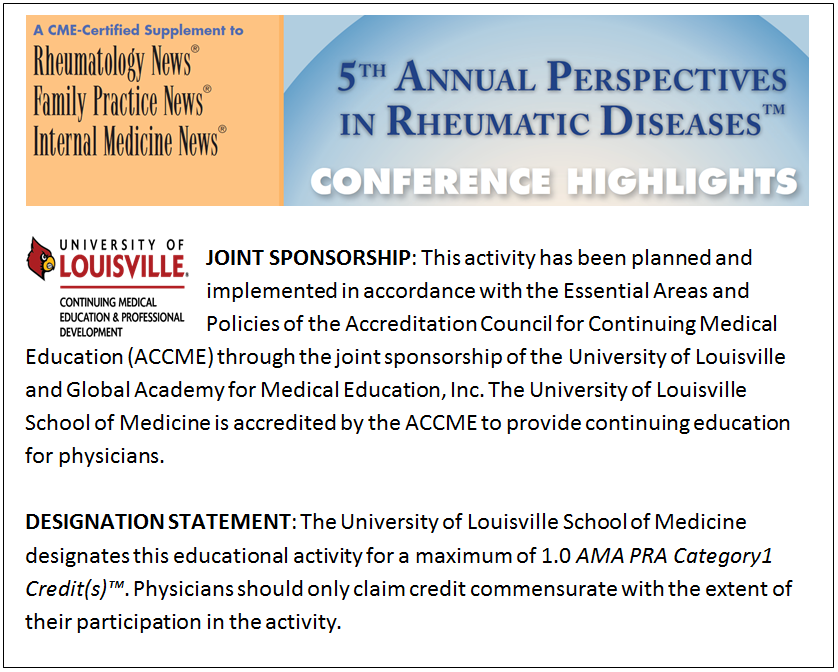2013 Perspectives In Rheumatic Diseases Conference Highlights CME Post Test
- CME
- ACR
- EULAR
2.
You may optionally provide this to label your report, leaderboard, or certificate.
×
Thank you for your feedback!
















